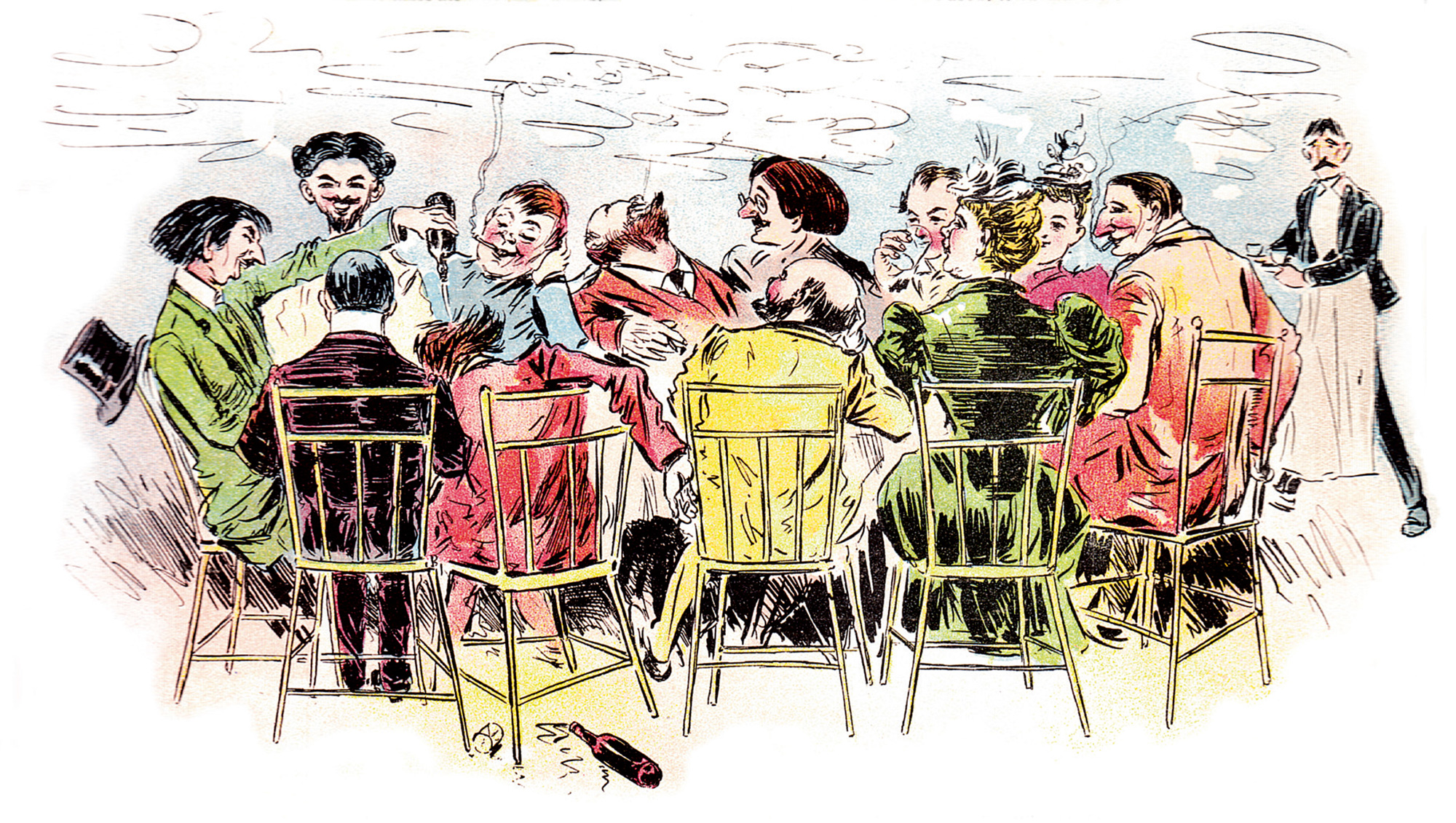Well, Ada Clare!
The queen of the bohemians
John Strausbaugh

Bohemianism didn’t come to Greenwich Village with the bongo-slapping beatniks of the 1950s, nor in the 1910s, when the Village was declared “the Left Bank of America.” The first self-declared bohemians appeared there in the late 1850s, a full century before Howl and On the Road were published. American bohemianism was literally an underground phenomenon, centered on a restaurant and saloon called Pfaff’s located in a basement on Broadway, a few doors up from Bleecker Street.
A French journalist, Felix Pylat, had first applied the term bohemian, meaning gypsy, to the impoverished artists and poets on Paris’s Left Bank in 1834. Henry Murger’s 1849 play Scènes de la vie de Bohème, greeted in Paris with thunderous applause, and his bestselling novel of the same name published in 1851, spread a bohemian fad to London and thence to New York (where several of the early bohemians were English and Irish emigrés). By 1858, the New York Times felt obliged to print a snarky definition of the term, observing that “Bohemian is now heard almost as frequently as the once unknown term of loafer. But a Bohemian is not quite a loafer, though he is not far removed from one. The Bohemian is either an artist, or an author, whose special aversion is work, and whose ambition is to excel in some particular walk for which Nature never designed him. ... The true Bohemian has either written an unsuccessful play, or painted an unsalable picture, or published an unreadable book, or composed an unsung opera.” Bohemians “hold the finest sentiments, and have a distinctive aversion of anything that is low or mean, or common or inelegant. Still, the Bohemian cannot be called a useful member of society.”
Pfaff’s was known for its fine beer selection, an excellent wine list, and real silver and china service. Regular customers sat at small tables in the front, while a long table in the rear was reserved for the bohemian crowd. Charles Pfaff was a German Swiss who, like all the best publicans, was a good-natured host to his colorful, eccentric clientele, and shrewd enough to exploit their presence as a draw to wannabes and gawkers. Pfaff’s beefsteak and pfannkuchen were renowned, but most folks came, the New York Times later said, to “get a look at the lions of bohemia.”
Today the best known of those lions is Walt Whitman, but in its brief heyday from the late 1850s to the start of the Civil War, Pfaff’s was frequented by a number of notable characters, several of whom were more celebrated at the time than the poet from Brooklyn. The unlikely center of Pfaff’s bohemian scene was a slight, perpetually pipe-smoking New Englander, Henry Clapp Jr. He’d been a temperance lecturer and Sunday school teacher when he encountered the bohemian life on a trip to Paris and brought it back with him to New York. Clapp founded and edited a weekly newspaper,the Saturday Press. It scratched out a chronically cash-strapped subsistence from October 1858 into December 1860, and was later revived by Clapp for less than a year in 1865. The Press is best remembered in literary history for its relentless championing of Whitman’s 1860 edition of Leaves of Grass, at a time when most critical responses were extremely negative, and for helping to kick off Mark Twain’s career by first publishing “Jim Smiley and His Jumping Frog” in the 1865 reincarnation.